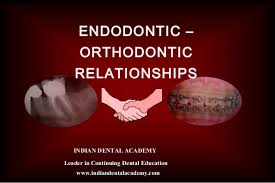direct admission-Endodontic & Orthodontic
direct admission in dental courses
Endodontic & Orthodontic
Endodontics:Endodontists are dentists who specialize in saving teeth through different procedures which involve the pulp (nerve) and root of teeth. Endodontist comes from the Greek “endo” meaning inside and the word “odont” meaning tooth. All dentists are trained to treat and diagnose diseases of the pulp (nerve), however, some teeth can be especially difficult to diagnose and treat. Reason why some patients are referred to the endodontist.
An endodontist, as defined by the American Board of Endodontists, is a dental specialist in the treatment of diseases and injuries to the dental pulp, root and surrounding tissues of the teeth. Endodontists receive a “certificate in Endodontics” after additional 2-3 years of training in an accredited dental program after dental school.Endodontics
Endodontists are dentists who specialize in maintaining teeth through endodontic therapy – procedures, involving the soft inner tissue of the teeth, called the pulp. The word “endodontic” comes from “endo” meaning inside and “odont” meaning tooth. Like many medical terms, it’s Greek. All dentists are trained in diagnosis and endodontic therapy, however, some teeth can be especially difficult to diagnose and treat. That’s why you may have been referred to an endodontic specialist.
In addition to dental school, endodontist’s receive two or more years of advanced education in this kind of treatment. They study root canal techniques and procedures in greater depth, for diagnosis and treatment of more difficult cases. For this reason, many dentists choose to refer their patients to endodontist.
Endodontic specialists:
Endodontic specialists practice in the branch of dentistry that is concerned with the morphology and pathology of the pulpo-dentine complex and periradicular tissues. Its study and practice encompasses the basic clinical sciences including the biology of the normal pulp, and the aetiology, diagnosis, prevention, and treatment of diseases and injuries to the pulp and associated perpendicular tissues.
Specialist endodontics is undertaken by a dental practitioner who possesses additional postgraduate qualifications, training and experience recognized by the Council as appropriate for registration.
Orthodontist
Orthodontia, also known as orthodontics and dentofacial orthopedics, is a specialty field of dentistry. An orthodontist is a specialist who has undergone special training in a dental school or college after they have graduated in dentistry. It was established by the efforts of pioneering orthodontists such as Edward Angle and Norman William Kingsley. The specialty deals primarily with the diagnosis, prevention and correction of malpositioned teeth and the jaws.
Orthodontics is a branch of dentistry that specializes in treating patients with improper positioning of teeth when the mouth is closed (malocclusion), which results in an improper bite.
Orthodontics also includes treating and controlling various aspects of facial growth (dentofacial orthopedics) and the shape and development of the jaw. An orthodontics specialist is called an orthodontist.
Orthodontics used to be called orthodontia – the word comes from the Greek orthos, meaning “straight, perfect or proper”, and dontos, which means “teeth”.
Orthodontics also includes cosmetic dentistry; when the patient’s aim is to improve his/her appearance.
An orthodontist uses a range of medical dental devices, including headgear, plates, braces, etc. to help in:
Closing wide gaps between the teeth
Making sure the tips of the teeth are aligned
Straightening crooked teeth
To improve speech or eating (oral function)
To improve the long-term health of gums and teeth
To prevent long-term excessive wear or trauma (of the teeth)
Treating an improper bite
Orthodontic specialists:
Orthodontic specialists practice in the branch of dentistry that is concerned with the supervision, guidance and correction of the growing and mature dentofacial structures and includes the diagnoses, prevention, interception and treatment of all forms of malocclusion of the teeth and associated alterations in their surrounding structures.
Specialist orthodontics is undertaken by a dental practitioner who possesses additional postgraduate qualifications, training, and experience recognized by the Council as appropriate for registration.
specialization in M.D.S:
M.D.S in orthodontic,
M.D.S in pedodontic,
M.D.S in Endodontics,
M.D.S in periodontics,
M.D.S in oral surgery,
M.D.S in oral pathology,
M.D.S in oral medicine,

CONTACT DETAILS:
contact person:Mr.Praveen kumar
contact number:+91-9535692031/+91-8884186205
++++We specialize in admissions in Top Educational Institutes of Karnataka & Maharashtra in the streams of Medical, Engineering, Management & others for both undergraduate & postgraduate courses in Top Private Colleges+++


Recent Comments